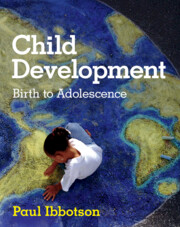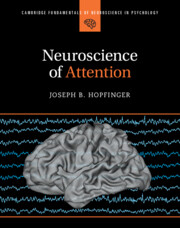Refine search
Actions for selected content:
300 results
Dietary factors and MRI biomarkers of brain ageing in general populations: a comprehensive systematic review
-
- Journal:
- Nutrition Research Reviews , First View
- Published online by Cambridge University Press:
- 24 November 2025, pp. 1-29
-
- Article
-
- You have access
- Open access
- HTML
- Export citation

Genes, Brains, Evolution and Language
- The Innateness Debate Continued
-
- Published online:
- 13 November 2025
- Print publication:
- 13 November 2025
11 - Evaluating the Arguments: A Forum Discussion
- from Part VI - Winding Up
-
- Book:
- Genes, Brains, Evolution and Language
- Published online:
- 13 November 2025
- Print publication:
- 13 November 2025, pp 409-438
-
- Chapter
- Export citation
Heterogeneity of brain functional connectivity, transcriptome, and neurotransmitter profiles in major depressive disorder
-
- Journal:
- Psychological Medicine / Volume 55 / 2025
- Published online by Cambridge University Press:
- 12 November 2025, e341
-
- Article
-
- You have access
- Open access
- HTML
- Export citation
Chapter 15 - Language and Emotion Concepts in the Predictive Brain
- from Section III - Emotion Perception and Elicitation
-
-
- Book:
- The Cambridge Handbook of Human Affective Neuroscience
- Published online:
- 16 September 2025
- Print publication:
- 02 October 2025, pp 306-322
-
- Chapter
- Export citation
Chapter 26 - Neural Evidence for Cultural Variation in Emotion
- from Section VI - Social Emotions
-
-
- Book:
- The Cambridge Handbook of Human Affective Neuroscience
- Published online:
- 16 September 2025
- Print publication:
- 02 October 2025, pp 523-543
-
- Chapter
- Export citation
Chapter 4 - Perception and Voluntary Motion
-
- Book:
- Galen on Human Physiology
- Published online:
- 28 July 2025
- Print publication:
- 02 October 2025, pp 139-182
-
- Chapter
- Export citation
Chapter 12 - Pain in the Brain
- from Section III - Emotion Perception and Elicitation
-
-
- Book:
- The Cambridge Handbook of Human Affective Neuroscience
- Published online:
- 16 September 2025
- Print publication:
- 02 October 2025, pp 248-265
-
- Chapter
- Export citation
18 - Neuroanthropology
- from Part IV - Body, Emotion, Self, and Experience
-
-
- Book:
- The Cambridge Handbook of Psychological Anthropology
- Published online:
- 22 October 2025
- Print publication:
- 25 September 2025, pp 435-459
-
- Chapter
- Export citation
MR spectroscopic imaging and its association with EEG, CSF, and psychometric/neuropsychological findings in patients with suspected autoimmune psychosis spectrum syndromes
-
- Journal:
- Acta Neuropsychiatrica / Volume 37 / 2025
- Published online by Cambridge University Press:
- 17 September 2025, e88
-
- Article
-
- You have access
- Open access
- HTML
- Export citation
Supplementation with fish oil reduces αβ 42 burden and shifts αβ precursor protein processing toward non-amyloidogenic pathways in a rat model of hyperglycaemic Alzheimer’s disease
-
- Journal:
- Journal of Nutritional Science / Volume 14 / 2025
- Published online by Cambridge University Press:
- 01 September 2025, e61
-
- Article
-
- You have access
- Open access
- HTML
- Export citation
Differences in neuropsychological performance across clinical variants of progressive supranuclear palsy
-
- Journal:
- Journal of the International Neuropsychological Society / Volume 31 / Issue 5-6 / June 2025
- Published online by Cambridge University Press:
- 18 August 2025, pp. 384-395
-
- Article
- Export citation
11 - Breaking New Ground: Novel Approaches to Understanding Catatonia and the Brain–Mind Relationship
-
- Book:
- Catatonia
- Published online:
- 26 July 2025
- Print publication:
- 14 August 2025, pp 144-154
-
- Chapter
- Export citation
Chapter 6 - Neuroscience and Compassion
- from Part I - Compassion in Healthcare
-
- Book:
- Handbook of Compassion in Healthcare
- Published online:
- 27 June 2025
- Print publication:
- 17 July 2025, pp 52-59
-
- Chapter
-
- You have access
- Open access
- HTML
- Export citation
Chapter 1.3 - Physiology of the Central, Peripheral and Autonomic Nervous Systems
- from Sec 1 - Physiology
-
- Book:
- Dr Podcast Scripts for the Primary FRCA
- Published online:
- 19 June 2025
- Print publication:
- 03 July 2025, pp 55-81
-
- Chapter
- Export citation
Associations of neighborhood threat and deprivation with psychopathology: Uncovering neural mechanisms
-
- Journal:
- Development and Psychopathology / Volume 37 / Issue 5 / December 2025
- Published online by Cambridge University Press:
- 30 June 2025, pp. 2646-2660
-
- Article
- Export citation

Child Development
- Birth to Adolescence
-
- Published online:
- 19 June 2025
- Print publication:
- 12 June 2025
-
- Textbook
- Export citation
Chapter 1 - A Historical Account of the Neurology of Breathing
-
-
- Book:
- Clinical Neurorespiratory Medicine
- Published online:
- 26 May 2025
- Print publication:
- 19 June 2025, pp 1-18
-
- Chapter
- Export citation
Psychiatric symptoms on the ovarian hormone roller-coaster
-
- Journal:
- The British Journal of Psychiatry / Volume 226 / Issue 6 / June 2025
- Published online by Cambridge University Press:
- 18 June 2025, pp. 329-330
- Print publication:
- June 2025
-
- Article
-
- You have access
- HTML
- Export citation

Neuroscience of Attention
-
- Published online:
- 02 May 2025
- Print publication:
- 22 May 2025
-
- Textbook
- Export citation
